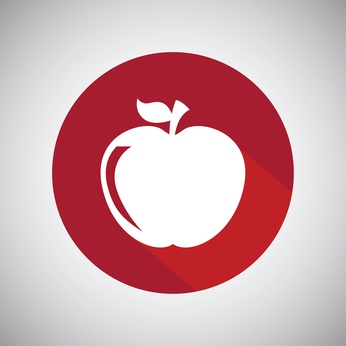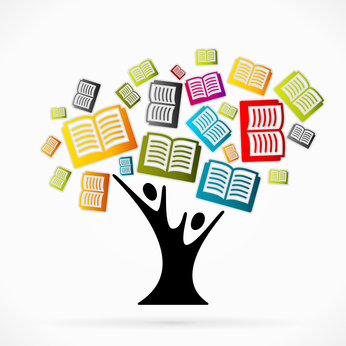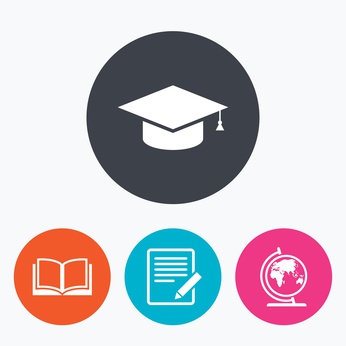Home of Free Common Core Worksheets
Biglearners.com has aligned our education content to US common core standards. Our K-5 students and teachers can leverage the full benefits of our structured and organized content. This effort makes it easy to locate our high quality printable worksheets for any grade and standard for Math and ELA. We have thousands of printable Math and English Language Arts worksheets. You will find worksheets that will help you master the foundations of reading literature, informational text, writing skills, rules and conventions of English Language, and vocabulary building. We have tons of flashcards, writing prompts, and other printables for English language. In Math, we cover algebra, numbers and operations, fractions,measurement and data, and geometry.

- Aligned to US Common Core Standards
- Printable High Quality Worksheets
- Unlimited Access to K-5 Grades
- Math and English Language Arts
- Answer Keys

Grades
Our common core aligned content covers a variety of standards defined by Common Core State Standard(CCSS) initiative.
These standards establish a set of clear and consistent guildelines about
what student are expected to master and be able to do in Mathematics and English
Language Arts. Based on these guildelines, we have designed and created worksheets that should help teachers and students
easily identify, learn, and master any standards.
Click on any link below to view the worksheets for various common core standards in Math or Language.
We have thousands of free common core aligned worksheets inside. Explore!
Math
Kindergartners start with numbers, representing and comparing them. We start with taking help from pictures and objects. We progress towards written numerals, modelling simple addition and subtraction, counting, combining, and segregating sets. Get introduced to the base ten system. Compose numbers from 11-19 in tens and ones. We introduce ourselves to basic geometric shapes like circles, squares, triangles etc. We know about solid shapes like cyclinders, cubes, and spheres. Learn to name 2-d and 3-d shapes. Compose simple shapes to form larger shapes.
English Language Arts
Kindergartners start reading alone and in groups with support. Retell key characters and details from poems and prose. Read in order. Undestand, read, and write uppercase and lowercase ABCs. Know and practice common sight words. Learn spoken word, syllables, and initial/middle/final sounds in phonics. Blend syllables to make new words. Learn CVC words. Start to answer simple questions in writing. Write sentences about book titles, preferences, and add small details. Use drawing to supplement information to your writing. Use guidence to explore digital tools. In language, learn about frequently used nouns, plural nouns, prepositions, and verbs. Differenciate between question words. We get introduced to capitalization. Learn about consonants and vowels. Use grade level words in your writing.
Jacob is really hungry and can't wait to eat his lunch.
Core Standard: RL.K.2
Math
First graders expand their understanding of addition, subtraction using strategies. We use models to add, take out from, group whole numbers within 100. Find 10 more or less. Learn more about the base ten system and grouping in ones and tens. We learn to represent real life problems with simple addition and subtraction equations. Use place value to subtract multiples of 10. Learn the process of measurement using units and repetition. Tell and write time in hours and half-hours using analog and digital clocks. In geomtry, we learn to compose and decompose plane and solid shapes. Partition circles and rectangles into two and four equal shares. Describe the shares using the words halves, fourths, and quarters.
English Language Arts
Read literature and informational text. Retell key events, characters, key details and message using illustrations. Understand phrases and their meanings in text. Learn features of a sentence. In phonics, learn about long form short vowel sounds in single-syllable words. Know about common consonant digraphs and decode mono-syllable words.
Learn to write small opinions naming the book, some reasoning and a resonable conclusion. Write nrratives using sequence of events. In language, use common, proper, and possesive nouns. Dig more into pronouns, adjectives, and frequently used prepositions. Get better with punctuation and capitalization. Use context clues and affixes to understand meaning of words.
Read the sentences. Then, determine if they provide an information or tell a story.
Core Standard: RL.1.5
Math
In grade 2, students dive deeper into the base ten system. Turn into an expert at adding 2 single-digit numbers. Practice counting in fives, tens, hundreds, and their multiples. Compute sums and differences within 1000. Learn about comparison of numbers and comparison symbols. In measurement, learn the standard units and use rulers and tools. Estimate lengths using units of inches, feet, centimeters, and meters. Learn about shapes and their properties based on sides and angles. Get introduced to concepts of perimeter, area, and volume. Work with time and money. Learn data and representation by using line plots, picture, and bar graphs.
English Language Arts
Time to read interesting fables and folktales from diverse cultures. Ask and answer questions about literature and information texts. Be able to describe the structure and contrasting view points. Use illustrations, diagrams, and words in print or digital text to explain. Decode regularly spelled two-syllable words with long vowels. Understand common prefixes and suffixes. Read orally at an appropriate rate. Recognize grade-appropriate irregularly spelled words.
While writing opinion pieces, introduce the topic or book, use linking words to connect an opinion and reasons supporting it. Learn to revise and edit with support. Participate in shared research and writing projects. In language, zoom into irregular plural nouns and reflexive pronouns. Write simple and compound sentences. Be proficient in capitalization, punctuation, and spelling when writing. Compare formal and informal use of language.
Read the classic fable and answer the questions.
Core Standard: RL.2.2
Math
In grade 3, students solve problems involving multiplication and division within 1000. Understand properties of multiplication and order of operations. Fluently multiply and divide within 100 and memorize products of two one-digit numbers. Solve two-step word problems. Learn to represent fractions on a number line. Start comparing equivalent fractions. Measurement leaps into estimation and measurement of time intervals, volume, and mass. Use your multiplication skills to calculate perimeter, missing sides, and area. Relate area to the operations of multiplication and addition. Classify shapes based on their properties like sides and angles. Use your fraction skills to divide shapes as part of the whole.
English Language Arts
While reading, understand the message, lesson, or moral and explain it using the key details in the text. Read prose, poetry, myths, legends, folktales, social and technical texts, and more to understand cause and effect, and points of view. Decode words with most common prefixes and derivational or latin suffixes. Work with context clues to understand meaning of words.
Writing extends to informative/explanatory texts that examines and develop a topic with facts and details. Learn to write narratives with characters, dialogues, sequential events, and actions. In language, learn the function of nouns, pronouns, verbs, adjectives, and adverbs. Use figurative language, word relationships, and nuances in word meanings.
Read each sentence carefully. Circle the idea, object, or animal being personiï¬ed. Underline the words that show personiï¬cation.
Core Standard: RL.3.4
Math
Master place value, property of operations, and number operations using multi-digit numbers. Fourth graders start learning about factors and multiples. Start to analyze and extend number patterns. Start to identify equivalent fractions. Represent fractions as decimals and compare fractions, decimals or a mix. In measurement, we learn to covert between units. Learn to measure angles. Data interpretation and representation get a bit complex. In geometry, draw and identify lines and angles. Draw and classify shapes using these properties.
English Language Arts
In grade 4, we learn to draw inferences and summarize. Explain major differences between poems, drama, and prose. Compare and contrast similar themes and topics. Interpret data and technical text. Determine and describe settings, themes, and events. Compare and contrast a firsthand and secondhand account of the same event or topic. Read accurately unfamiliar multisyllabic words in context and out of context.
While writing, we develop the topic with facts, definitions, concrete details, quotations, or other information and examples related to the topic. We also write organized pieces(opinions and narratives) using details and evidences. In language, we work with prepositional phrases, progressive verb tenses, and modal auxiliaries. Learn to use thesaurus, tools, and technology.
Read the passage about Mount Rushmore National Memorial to determine the main idea and two supporting details.
Core Standard: RI.4.2
Math
Fifth graders start writing and solving numerical expressions and equations. Go deep into place value system and practice all four operations with whole numbers and decimals to the hundredths. Master like and unlike fractions, and their operations with whole numbers and vice versa. Compare two fractions with different numerators and denominators. In measurement, convert units within a given measurement system. Apply the area and perimeter formulas for rectangles in real world and mathematical problems. Understand and measure volume. Learn about various ways to represent and graph data. In geometry, get introduced to coordinate place. There is more to learn about shapes and ways to classify them.
English Language Arts
In fifth grade, readers determine how characters in a story or drama respond to challenges or how the speaker in a poem reflects upon a topic. Compare and contrast characters and points of view. Demonstrate the ability to locate and integrate information efficiently from various digital and print sources. Use the knowledge of all letter-sound correspondences, syllabication patterns, roots and affixes to read accurately unfamiliar multisyllabic words in and out of context.
Writing applications get complex with narratives, essays, and fiction. We use transitional words, phrases, and clauses to sequence the events. In language, we learn to use conjunctions, interjections, and perfect verb tenses. Upgrade the vocabulary with affixes and roots, idioms, and proverbs. We expand on our punctuation skills. Focus is on use of technology.
Read the poem "A Good Play" by Robert Louis Stevenson about two friend's imaginary play. Test yourself whether you understand the nuance of reading poetry.
Core Standard: RF.5.4.B
Testimonials
"My favorite feature of Biglearners.com is the ease of use. My child always can find the right worksheets himself. Worksheets in both Language and Math are simply awe-inspiring. The worksheets are not a collection of repetitive problems and are rather very interesting."
Parent, Cupertino, CA
"Simply awesome content! Curriculum is well organized and comprehensive! I am glad I found it."
Student, Los Angeles, CA







